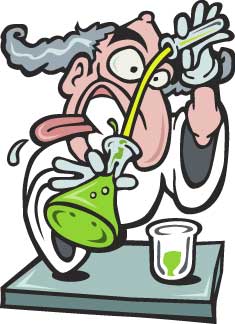Arctic water flow speeding up
 Measures of rain, snow and runoff in Siberia show hefty changes.
Measures of rain, snow and runoff in Siberia show hefty changes.Source: Copyright 2006, Nature
Date: April 6, 2006
Byline: Quirin Schiermeier
One of Siberia's largest rivers is dumping about 10% more fresh water into the Arctic today than it was some 60 years ago, thanks to the complex effects of increased snowfall, melting permafrost and changing weather.
The result is in line with predictions of how climate change is expected to alter the Arctic water cycle, and is a worrying sign in terms of maintaining important ocean currents. The more fresh water that enters the northern seas, the less dense this water becomes and the less likely it is to sink. This sinking currently helps to drive a powerful Atlantic current that keeps the climate temperate and steady.
Freshening of the Arctic Ocean may already have begun to affect this so-called thermohaline circulation, but oceanographers and climate modellers are still puzzling about the magnitude and likely effects of the changes.
Jessie Cherry of the University of Alaska in Fairbanks and her team analysed records of precipitation, snow depth and runoff in the catchment area of the Lena River, an area of more than a million square kilometres east of the Ural mountains in Siberia.
The team, including two Russian scientists, found that the average winter snow depth there has doubled to 44 centimetres from 22 centimetres in 1940. Although summers in the region have become significantly dryer, and also slightly cooler, total runoff from the Lena has increased by around 10%, they reported at the European Geosciences Union annual meeting in Vienna, Austria, on 5 April.
Other research projects have looked at river runoff before: the annual runoff of the six mightiest rivers draining into the Arctic Ocean, including Russia's Ob, Lena and Yenisey, increased by about 7% between 1936 and 19991. But the study by Cherry and colleagues looks at the full hydrological cycle, in order to unpick exactly how and why the rivers are pouring out more water.
Melting land
An increased snowmelt plays a big role during the spring, but there are other factors too. The atmosphere is getting warmer and moister, says Cherry. And, whereas Siberian summer days are getting cooler, night temperatures have increased, allowing for more permafrost thawing and more water drainage. In the winter, warming has enhanced evaporation, precipitation and runoff.
Permafrost thawing could be the biggest effect in the future, Cherry says. Increased melting of frozen soils has so far only been observed in the southern third of their study area. If it were to spread further north, which could happen as temperatures continue to rise, this would really boost runoff, she says.
Validation
Given the number of factors involved in the water cycle and the difficulty of maintaining devices that collect data, it has proven much harder to quantify changes in water flow than, for example, global temperatures2. Cherry's unpublished analysis, which is based on daily observations from seven Russian meteorological stations and 40 stations recording snow depth, is one of few studies that climate researchers can use to validate their models of hydrological changes.
"It is always fairly useful to know what the real world does, and the Arctic freshwater budget is indeed very important," says Michael Vellinga, a climate modeller at the UK Met office in Exeter. "Solid data about one large river system are therefore very welcome; having that kind of information Arctic-wide would be incredibly valuable."
Cherry and others are now working on a model to help scientists calculate details of snowfall from available measurements, such as snow depth and air temperature. The model, known as the Pan-Arctic Snowfall Reconstruction, should help to pin down details of the hydrological cycle in other parts of the Arctic.
References
Peterson B. J., et al. Science, 298. 2171 - 2173 (2002).
Ingram William J., Allen Myles R., et al. Nature, 419. 224 - 232 (2002).
news source link
or
Arctic water flow speeding up
and also here


0 Comments:
Post a Comment
<< Home